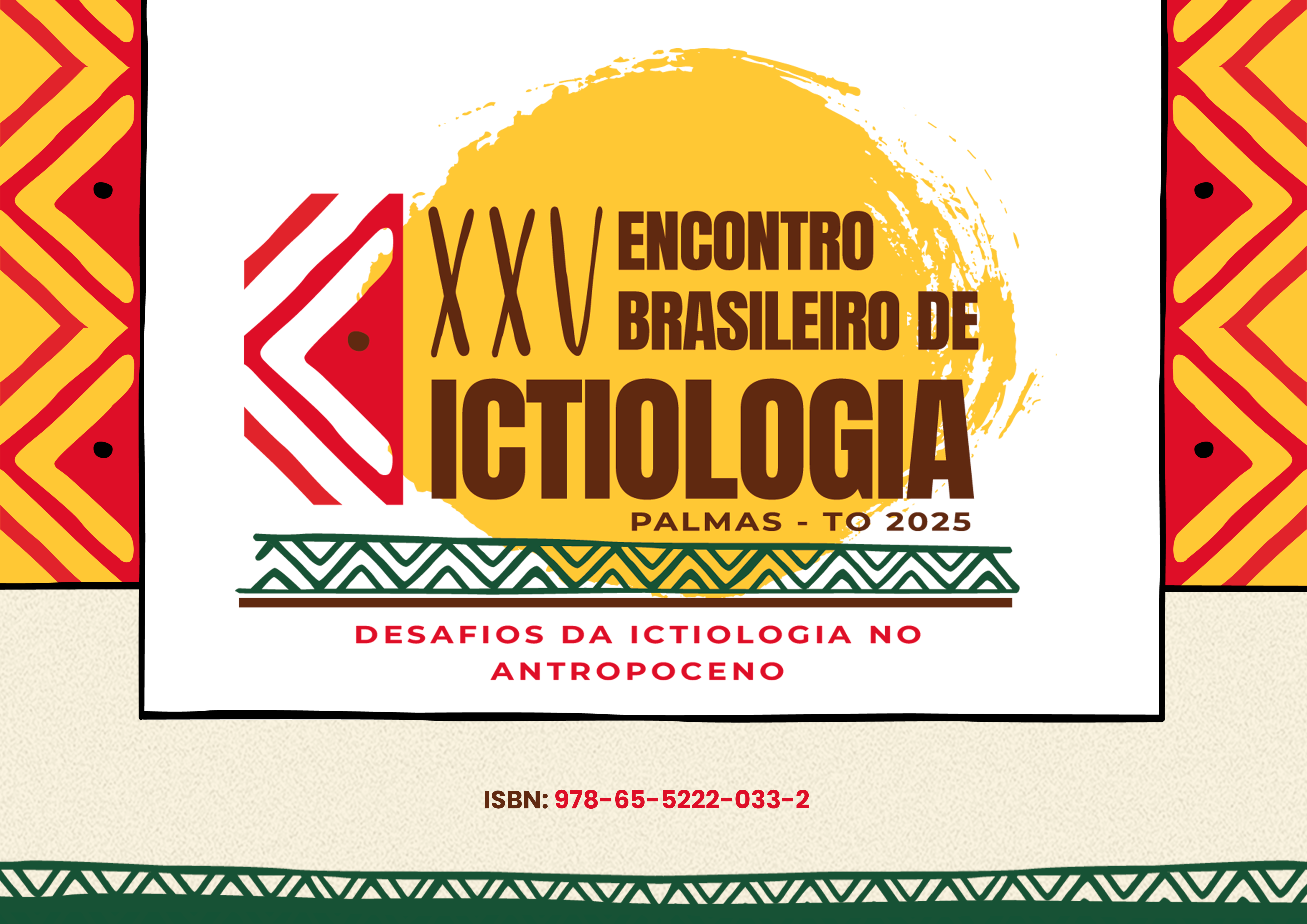LONG-TERM COMBINED EFFECTS OF RAINFALL AND DISTURBANCES DUE TO LAND USE AND DAM FAILURE ON THE ICHTHYOFAUNA IN A NEOTROPICAL STREAM
"2025-02-12 10:36:07" // app/Providers/../Base/Publico/Artigo/resources/show_includes/info_artigo.blade.php
App\Base\Administrativo\Model\Artigo {#1845 // app/Providers/../Base/Publico/Artigo/resources/show_includes/info_artigo.blade.php #connection: "mysql" +table: "artigo" #primaryKey: "id" #keyType: "int" +incrementing: true #with: [] #withCount: [] +preventsLazyLoading: false #perPage: 15 +exists: true +wasRecentlyCreated: false #escapeWhenCastingToString: false #attributes: array:35 [ "id" => 119971 "edicao_id" => 384 "trabalho_id" => 470 "inscrito_id" => 328 "titulo" => "LONG-TERM COMBINED EFFECTS OF RAINFALL AND DISTURBANCES DUE TO LAND USE AND DAM FAILURE ON THE ICHTHYOFAUNA IN A NEOTROPICAL STREAM" "resumo" => "Land use and climate change have led to significant degradation of freshwater ecosystems, impacting hydrological cycles that are essential for maintaining water quality and biodiversity. This study, conducted in the Sorocaba River basin, covers the period from 2006 to 2024, divided into four phases: rural interventions, urban development interventions, restorative interventions, and the post-restorative period. Before the construction of a factory near the dam in 2010, more than 90% of the area was dominated by farming activities, including agriculture and pastures. After the factory's construction, non-vegetated areas increased to nearly 40%, which was followed by a dam breach in 2013, caused by sedimentation in the artificial lake and continuous rainfall. Restorative actions were initiated after the breach, leading to an increase in forest cover, which had fallen to less than 1% in 2011 and 2012, reaching 6.82% by 2023. These restorative efforts also facilitated the recolonization of the fish community in the stream, with fish species richness gradually increasing. Fish sampling and meteorological data, including precipitation and temperature trends, were analyzed to understand the effects of land use changes and climate on the aquatic ecosystem. The results show that both the land use changes, particularly in non-vegetated areas, and climate variations, such as decreasing precipitation, influenced the stream’s ecological dynamics. This study highlights the importance of ongoing adaptive management to mitigate the effects of urbanization and climate change on freshwater ecosystems, ensuring their long-term sustainability." "modalidade" => "Comunicação Oral (CO)" "area_tematica" => "AT 01 - Ecologia e Conservação" "palavra_chave" => ", , , , " "idioma" => "Português" "arquivo" => "TRABALHO__EV205_MD1_ID328_TB470_07102024143632.pdf" "created_at" => "2025-02-13 11:08:16" "updated_at" => null "ativo" => 1 "autor_nome" => "NÍCHOLAS DE PAULA NICOMEDES" "autor_nome_curto" => "NÍCHOLAS N" "autor_email" => "nicholas.nicomedes@hotmail.com" "autor_ies" => "UNIVERSIDADE ESTADUAL PAULISTA JÚLIO DE MESQUITA FILHO (UNESP)" "autor_imagem" => "" "edicao_url" => "anais-do-ebi---encontro-brasileiro-de-ictiologia" "edicao_nome" => "Anais do EBI - Encontro Brasileiro de Ictiologia" "edicao_evento" => "XXV ENCONTRO BRASILEIRO DE ICTIOLOGIA" "edicao_ano" => 2025 "edicao_pasta" => "anais/ebi/2025" "edicao_logo" => null "edicao_capa" => "67b49e4d8c758_18022025115053.png" "data_publicacao" => null "edicao_publicada_em" => "2025-02-12 10:36:07" "publicacao_id" => 116 "publicacao_nome" => "Revista EBI" "publicacao_codigo" => "978-65-5222-033-2" "tipo_codigo_id" => 2 "tipo_codigo_nome" => "ISBN" "tipo_publicacao_id" => 1 "tipo_publicacao_nome" => "ANAIS de Evento" ] #original: array:35 [ "id" => 119971 "edicao_id" => 384 "trabalho_id" => 470 "inscrito_id" => 328 "titulo" => "LONG-TERM COMBINED EFFECTS OF RAINFALL AND DISTURBANCES DUE TO LAND USE AND DAM FAILURE ON THE ICHTHYOFAUNA IN A NEOTROPICAL STREAM" "resumo" => "Land use and climate change have led to significant degradation of freshwater ecosystems, impacting hydrological cycles that are essential for maintaining water quality and biodiversity. This study, conducted in the Sorocaba River basin, covers the period from 2006 to 2024, divided into four phases: rural interventions, urban development interventions, restorative interventions, and the post-restorative period. Before the construction of a factory near the dam in 2010, more than 90% of the area was dominated by farming activities, including agriculture and pastures. After the factory's construction, non-vegetated areas increased to nearly 40%, which was followed by a dam breach in 2013, caused by sedimentation in the artificial lake and continuous rainfall. Restorative actions were initiated after the breach, leading to an increase in forest cover, which had fallen to less than 1% in 2011 and 2012, reaching 6.82% by 2023. These restorative efforts also facilitated the recolonization of the fish community in the stream, with fish species richness gradually increasing. Fish sampling and meteorological data, including precipitation and temperature trends, were analyzed to understand the effects of land use changes and climate on the aquatic ecosystem. The results show that both the land use changes, particularly in non-vegetated areas, and climate variations, such as decreasing precipitation, influenced the stream’s ecological dynamics. This study highlights the importance of ongoing adaptive management to mitigate the effects of urbanization and climate change on freshwater ecosystems, ensuring their long-term sustainability." "modalidade" => "Comunicação Oral (CO)" "area_tematica" => "AT 01 - Ecologia e Conservação" "palavra_chave" => ", , , , " "idioma" => "Português" "arquivo" => "TRABALHO__EV205_MD1_ID328_TB470_07102024143632.pdf" "created_at" => "2025-02-13 11:08:16" "updated_at" => null "ativo" => 1 "autor_nome" => "NÍCHOLAS DE PAULA NICOMEDES" "autor_nome_curto" => "NÍCHOLAS N" "autor_email" => "nicholas.nicomedes@hotmail.com" "autor_ies" => "UNIVERSIDADE ESTADUAL PAULISTA JÚLIO DE MESQUITA FILHO (UNESP)" "autor_imagem" => "" "edicao_url" => "anais-do-ebi---encontro-brasileiro-de-ictiologia" "edicao_nome" => "Anais do EBI - Encontro Brasileiro de Ictiologia" "edicao_evento" => "XXV ENCONTRO BRASILEIRO DE ICTIOLOGIA" "edicao_ano" => 2025 "edicao_pasta" => "anais/ebi/2025" "edicao_logo" => null "edicao_capa" => "67b49e4d8c758_18022025115053.png" "data_publicacao" => null "edicao_publicada_em" => "2025-02-12 10:36:07" "publicacao_id" => 116 "publicacao_nome" => "Revista EBI" "publicacao_codigo" => "978-65-5222-033-2" "tipo_codigo_id" => 2 "tipo_codigo_nome" => "ISBN" "tipo_publicacao_id" => 1 "tipo_publicacao_nome" => "ANAIS de Evento" ] #changes: [] #casts: array:14 [ "id" => "integer" "edicao_id" => "integer" "trabalho_id" => "integer" "inscrito_id" => "integer" "titulo" => "string" "resumo" => "string" "modalidade" => "string" "area_tematica" => "string" "palavra_chave" => "string" "idioma" => "string" "arquivo" => "string" "created_at" => "datetime" "updated_at" => "datetime" "ativo" => "boolean" ] #classCastCache: [] #attributeCastCache: [] #dates: [] #dateFormat: null #appends: [] #dispatchesEvents: [] #observables: [] #relations: [] #touches: [] +timestamps: false #hidden: [] #visible: [] +fillable: array:13 [ 0 => "edicao_id" 1 => "trabalho_id" 2 => "inscrito_id" 3 => "titulo" 4 => "resumo" 5 => "modalidade" 6 => "area_tematica" 7 => "palavra_chave" 8 => "idioma" 9 => "arquivo" 10 => "created_at" 11 => "updated_at" 12 => "ativo" ] #guarded: array:1 [ 0 => "*" ] }



